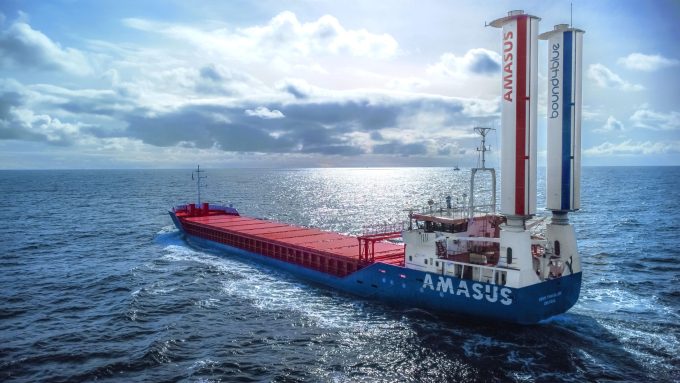Pricing deterrents have 'negligible impact' on shipping emissions, says study
Transport and Environment (T&E) has urged regulatory bodies to adopt “bespoke action” in reducing shipping ...

A general cargo vessel fitted with rear-mounted ‘e-sails’ – the 2,850dwt Eems Traveller – may provide an avenue for using wind power on shortsea container services.
Developer bound4blue’s tubular e-sails, sometimes referred to as ‘suction sails’, expel air through a rotor at the top, generating an internal vacuum causing a layer of airflow to adhere to the sail’s outer surface, akin to an aircraft wing. This allows a much smaller sail to generate similar thrust to a ...
Asia-USEC shippers to lose 42% capacity in a surge of blanked sailings
USTR fees will lead to 'complete destabilisation' of container shipping alliances
New USTR port fees threaten shipping and global supply chains, says Cosco
Outlook for container shipping 'more uncertain now than at the onset of Covid'
Transpac container service closures mount
DHL Express suspends non-de minimis B2C parcels to US consumers
Zim ordered to pay Samsung $3.7m for 'wrongful' D&D charges
Flexport lawsuit an 'undifferentiated mass of gibberish', claims Freightmate

Comment on this article